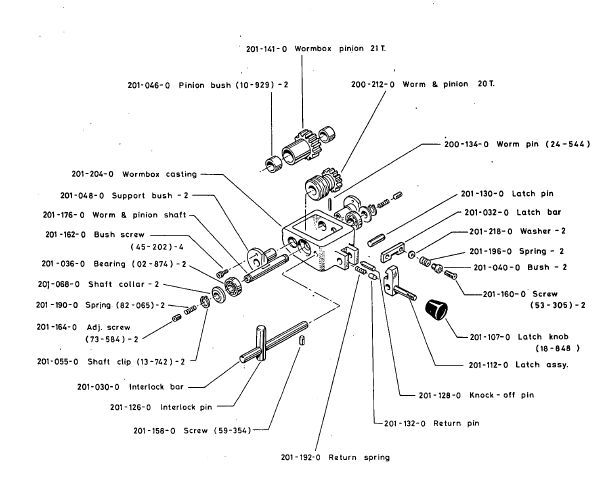Thanks for the info,I have just drained the Triumph saddle, oil was murkey and a couple of blobs of coolant, I last drained it about 22 years ago when I bought it,I will leave the oil to settle in the tin and see if there is any water in it.The lathe generally is in very good condition,I bought it at a government auction and it was ex Royal navy, The 3 jaw chuck was used but not worn, the four jaw was new and still greased,the face plate was in its box,the centres ,sleeves drill chuck were still in the crocell goo not used,no steadies,plus a new spare cross slide nut ,new worm gear for the feed shaft and some springs. The address of a small naval station along the south coast was on the face plate box, so why all the new kit,I have often wondered if all the loose equipment had been stolen or lost ,and all the very expensive new parts were replacements. An why does the feed clutch slip on a lathe that has not seen much use,no doubt I will find out. I have also just drained the apron on my Master 2500 the oil was clean,no sign of soluble oil ,though the master gets far more use and the oil is topped up alot more often than the triumph. When I bought the master at another government sale about 12 years ago,it had seen a bit more use,I stripped the cross slide at the time of purchase as it did not feel right , the feed screw was corroded having sat in a pool of corosive liquid in the trough in the saddle, A call to Colchester was made enquiring the price of screw and nut ,oh dear £ 400 plus vat ,a bit too expensive so I made a new cross slide screw on my other lathe and used the existing nut as it was not too worn, I could not find a drain hole in the saddle trough so I drilled one, and from the good condition of the oil it must be working,though my master is a bit newer than the Triumph and may have some seals fitted. I will have to wait a bit before working on the triumph until my backs better, At least the Triumph is free standing and easy to get at ,the master is hard against the shed wall and difficult to get at ,dont put big lathes against a wall,learn from my mistake.
David Oyns.





